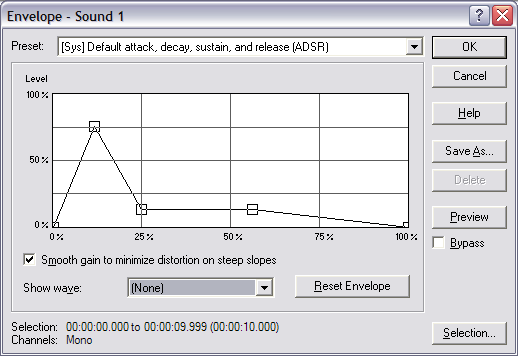MTD2 class 3
Contents
Review Properties 1
- Which wave (Wave1 or Wave2) has a Lower Frequnecy?
- Which wave (Wave1 or Wave2) has a Higher Amplitude?
- Which wave (Wave1 or Wave2) has a Longer Wavelength?
- Which wave (Wave1 or Wave2) has a Faster Speed?
- Which wave (Wave1 or Wave2) has a Higher Pitch?
- Which wave (Wave1 or Wave2) is Louder?
Perception of Amplitude and Frequency
Humans do not hear all frequencies equally. We perceive different frequencies with equal energy to have different amplitudes. The Fletcher Munson Curves show the phons scale, how amplitude is percieved by frequency
Fletcher Munson Curves 1 http://arts.ucsc.edu/EMS/Music/tech_background/TE-02/AcNumbers/AcNumbers.html
Fletcher Munson Curves 2 http://www.allchurchsound.com/ACS/edart/fmelc.html
Behaviour of sound waves
- Interference and Beats
- The Doppler Effect and Shock Waves
- Boundary Behavior
- Reflection, Refraction, and Diffraction
Phase
Phase in measured in degrees.
The phase of a sound has to do with the time domain.
Adding two Simple Harmonic waves -Applet
Adding two Simple Harmonc waves2 - Applet
http://library.thinkquest.org/19537/java/Wave.html
In class demo of how waves add show beats
Timbre/Harmonic structure
Timbre is a descriptive word used to help describe the 'color' and envelope of a sound.
All sound is made up of simultaneous sounding tones. In the 1700 Joseph Fourier a French mathematical physicist proved that all sound can be synthesized be adding sine waves. The way these sine waves are added together make things sound different.
http://www.gac.edu/~huber/fourier/
Different sound don't sound the same due to different fundamental frequencies, harmonics, complexity, and envelope.
http://www.rane.com/par-t.htm Harmonics Harmonics defined @ rane
Understanding Harmonics Fundamental Frequency and Harmonics Intruments
* Guitar string * Open-End Air Columns * Closed-End Air Columns
Natural harmonics are multiple of the fundamental
http://ptolemy.eecs.berkeley.edu/~eal/
eecs20/berkeley/scale/demo/timbre.html
Envelope
Envelope is the Time/Amplitude shape of the wave. It is esentially a mease of amplitude thought time.
Robert L Mott's Nine Components of Sound
Attack -- Decay-- Sustain -- Release

Different Domains of sound
Time Domain
Time along X axis and Amplitude Y axis -Fixed 2/29/00
Sine wave looks like a sine wave
Frequency Domain
Freq. along X axis and Amplitude Along Y axis-Fixed 2/29/00
Sine wave looks like a line
RMS
root mean square Abbr. rms, RMS Mathematics. The square root of the average of the squares of a group of numbers. A useful and more meaningful way of averaging a group of numbers.
from http://www.rane.com/par-r.html
The RMS averaging method is a better method for determining the amplitude of sound. Dynamic Range Definition @http://www.rane.com/par-d.html
The dynamic range of an audio system or and audio performance is the difference between the peak noise level and the noise floor.
Dynamic Range
Dynamic range = (Peak Level - Noise Floor)
Head Room
Definition @http://www.rane.com/par-h.html
The head room of an audio system is is the difference between the nominal level and the Peak level (or clipping point) Frequency Response Definition @http://www.rane.com/par-f.html
The range in frequency that an audio system or program contains or can pass between certain deviation.
Home Work
- Study for Quiz on weeks 1,2, and 3 and Chapter 1 in Sound Design for Interactive Multimedia
- Sound Sculpture or Audio Enviroment
- Review for Quiz1
